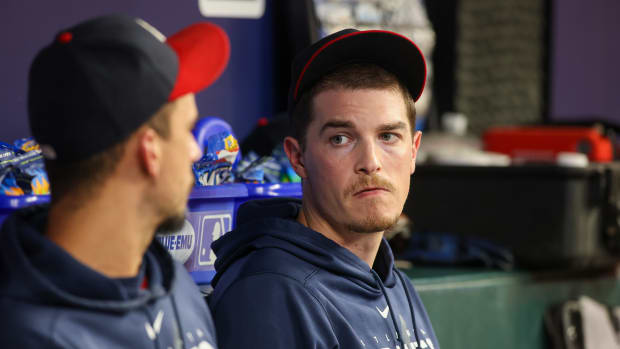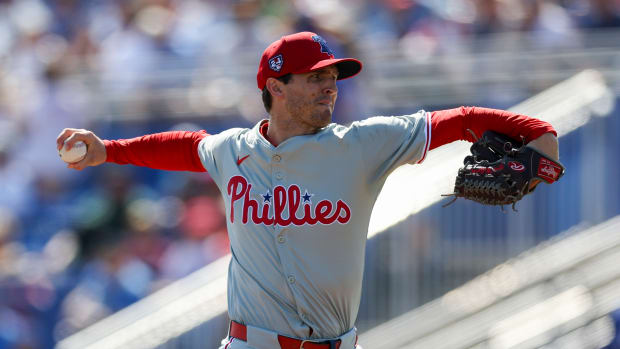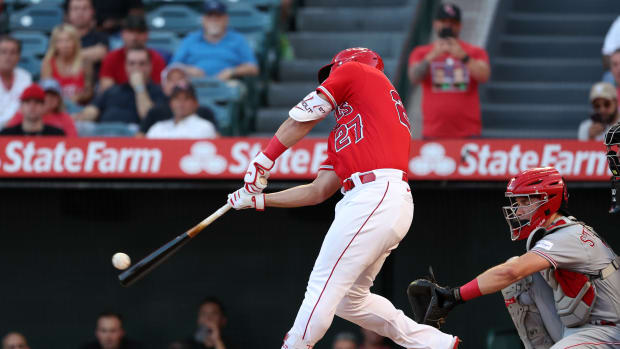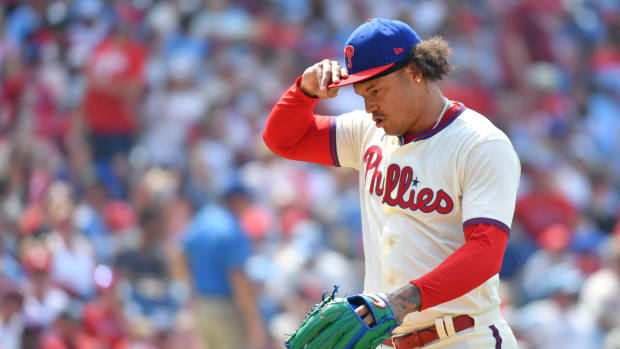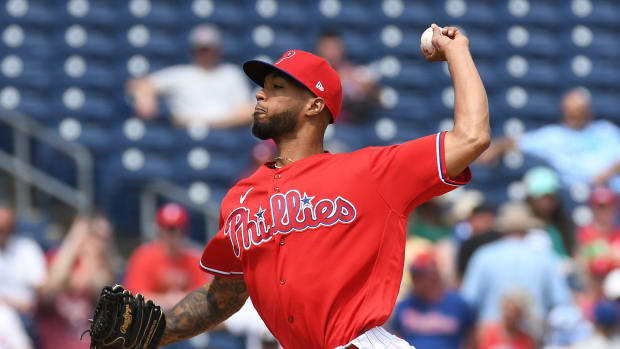Phillies Legends: Billy Hamilton
Everyone remembers Rickey Henderson, Lou Brock, and Ty Cobb for being thieves on the base paths. Their confidence on first base put fear into the minds of opposing pitchers, and their pure speed and acceleration helped advance them 90 feet without needing the help of their teammates. Philadelphia Phillies legend and Hall of Famer, Billy Hamilton, was that guy before the careers of Henderson, Brock, or even Cobb. Hamilton was the ultimate thief of the 19th century.
Born in February 1866, Hamilton grew up to be just 5’6” weighing 165 pounds. He had wide legs that were made of pure muscle, which were useful in stealing bases, covering the outfield, and bunting for base hits.
Hamilton was known for his large leads off of first base, and he was always given the green light to swipe a bag. Everyone knew he was going to take off, and yet it was nearly impossible to catch him. He was one of the first players in baseball history to perfect the head-first slide, which made him a novelty of his time and earned him the nickname, “sliding Billy.”
Hamilton is one of just five players to hit a lead off home run and a walk-off home run in the same game. He is also one of three players ever to score more runs in their career than total games played. He scored 1,697 runs in just 1,594 games.
To get a true grasp on the incredible career of Billy Hamilton, let’s look at his career achievements:
- National Baseball Hall of Fame (1961)
- 7th highest career batting average in MLB history - .344
- 4th highest career on base percentage in MLB history - .455
- 3rd most stolen bases in a career - 914
- Most seasons with 100+ stolen bases - 4
- Most runs scored in a single season with 198 (1894)
- Most consecutive games with a run scored - 24
- Most stolen bases in a single game - 7
Hamilton played 14 seasons in the majors and six with the Phillies, but he started his major league career in Kansas City with a team nicknamed the Cowboys. His first season with the team, he had an underwhelming performance on a last place team. However, he rebounded in a big way for his second major league season.
In 1889, Hamilton would bat .301 with a league leading 111 stolen bases. He also scored 144 runs in his 137 games played that year. This put him on notice around the league, and the Phillies needed to acquire the young star. In January of 1890, Kansas City sold Hamilton’s contract to Philadelphia for $5,000.
Hamilton’s first season in Philadelphia was a smashing success and only got better from there. In 1891, he led the league in six different offensive categories. He was batting .340 with a .453 on-base percentage, stole 111 bags, scored 141 runs, collected 179 hits, and drew 102 walks. It was one of the best offensive seasons the game has ever seen.
In 1891, Hamilton played centerfield for the Phillies between two other Hall of Famers, Ed Delahanty and Sam Thompson. They were the most offensively powerful outfield the league had ever seen and in 1892, all three outfielders hit over .300. Hamilton led the team that season batting .330.
In his career with the Phillies, Hamilton slashed .360/.468/.459 with a .927 OPS. He stole 510 bases with the team and scored 880 runs. His playing style was unlike anyone had ever seen, but in November of 1895, the Phillies made a grave mistake by trading him to the Boston Beaneaters (Atlanta Braves) for third baseman, Billy Nash.
Hamilton spent his final six seasons in Boston, and would never see his on-base percentage fall below the coveted .400 mark. His batting average would only dip below .300 one time in those same years. Billy Nash, on the other hand, struggled to hit .250 with the Phillies and saw little playing time in the three years he spent in Philadelphia.
Hamilton remained a dominant speedster in baseball until the 1899 season where his legs started to wear down and a knee injury held him back. His final three seasons in the majors would be considered the down years of his career, but certainly above average compared to the rest of the league.
Hamilton retired from the majors in 1901, but remained in the game of baseball as player-manager for other professional and semi-professional baseball leagues. When his playing days were over, he continued to manage until 1917 when he left the game for good.
After his official retirement from baseball, Hamilton lived in Worcester, Massachusetts with his wife and four daughters. He died in December 1940 at the age of 74. 21 years later, the Veterans Committee would vote him into the National Baseball Hall of Fame, where three of his children had the honor to represent him at the induction ceremony and share the story of the Philadelphia legend.
More From SI's Inside The Phillies:
- Phillies Prospect Stott Off to Hot Start in AFL
- Could Acquiring Starling Marte Make Sense for Phillies?
- Arbitration Projections: Who Will the Phillies Keep?
Make sure to follow Inside the Phillies on Facebook and Twitter!

